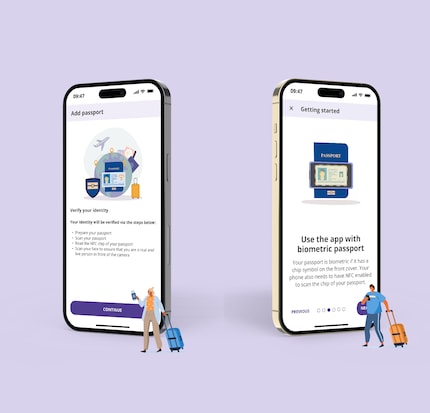
News + Trends
WhatsApp allows chatting with other messengers
by Florian Bodoky

The EU travel app is to digitise passports: The EU states have agreed on a corresponding law. Use is to remain voluntary. However, a start date has not yet been set.
The EU member states have agreed on a new law that will enable EU citizens to digitise their passports. With this step, they want to make travelling in the Schengen area possible.
The focus is on the EU Travel app, which will allow them to digitally transmit their travel documents and ID data. According to the documents, the app «is intended to speed up border controls and improve the protection of external borders».
The user downloads the EU Travel app. A digital ID data record is stored in it, which contains the same information as a chip passport or ID card (e.g. name, date of birth, biometric passport photo, but not fingerprints). When the app is set up, the person's ID is verified electronically and the stored data is encrypted. This is intended to prevent manipulation.

When crossing the border or boarding at the airport, the user can show the app's QR code or NFC data record. This is then read by border control, compared with the traveller's face and checked against the stored data. The link to the European digital identity wallet (EU Digital Identity Wallet) ensures that the app is recognised across countries and that the data is managed uniformly.
The Council of Ministers has approved this idea and is now continuing negotiations with the European Parliament. However, many technical and legal questions remain unanswered, such as how biometric data will be processed and how they can ensure that its use remains voluntary.
As yet, however, there is no fixed date from which the app will actually be ready for use. The member states must first define technical standards and determine how the systems of individual authorities communicate with each other. The details of the rights of use are also still up in the air. Accordingly, it is not yet clear whether the Swiss E-ID will be compatible with the system and whether you will be able to use it for travelling in the Schengen area. However, the likelihood is that the foreigner ID cards issued by the federal government, for example, must already comply with EU requirements.
I've been tinkering with digital networks ever since I found out how to activate both telephone channels on the ISDN card for greater bandwidth. As for the analogue variety, I've been doing that since I learned to talk. Though Winterthur is my adoptive home city, my heart still bleeds red and blue.
From the latest iPhone to the return of 80s fashion. The editorial team will help you make sense of it all.
Show all